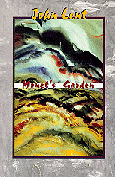


|
Monet's Garden.
John Lent.
Grades 12 and up / Ages 17 and up. ****/4
|

excerpt:
He can hear them rustling. He can't see them but he hears their small bodies racing through the stalks. He hears them stumbling and hooting and falling all over the place, laughing helplessly at nothing but this abandoned glee provided by a simple corn field in the summer sun. He can hold the mystery for once. These are my children and these are their lives rustling and growing around me in the blue air. I can't see but I can hold them in here. I can hold my heart open like this, open to the sun, turning it inside out to the yellow and the blue and, oh it feels so graceful....Author John Lent, lives in Vernon, B.C. where he teaches English at Okanagan University College. Monet's Garden is his first short story collection.
These connected stories eloquently explore family dynamics in the marriage of Charles and Colette, as well as in the lives of their three eldest children: Jane, Rick and Neil. Charles escapes from the stress of his life as an underpaid teacher by drinking, thereby keeping his wife and children uncertain and, in many ways, controlled by his moods. Yet, he loves his family and takes joy in them and, fortunately, they know it.
The stories are set in Edmonton, Vernon and Strasbourg, France, starting in 1960 (when Rick was 12) and ending in the 1990's with Charles' death and its repercussions in the lives of his wife and children. These characters are intensely introspective and observant, due in part at least, to their father's drinking and the resulting parental quarrels. The children may pretend to play in the basement, but they hear all that is said, and their attempts to make sense of these incidents form their approach to life.
Jane sums up her feelings of disquiet as she observes the frief of those around her, people she does not even know:
It was as if a three-dimensional drama was being enacted by a two-dimensional cast.
Although these stories can be read separately, and many were previously published in literary magazines, the author brilliantly connects one to the other until a cohesive picture emerges.
One recurring image throughout the stories is the "roof," that basic
human need for shelter and security. Keeping a roof over her/his heads is vital to each character as each muses over the mysteries of life.
In the final story, "Roofs in the Heart," Jane's (or perhaps Rick's or Neil's) fragmented self seems to come together like a jazz suite "picking up the disparate threads." She finds herself running joyfully in the rain to "where there are no roofs."
Readers who prefer stories of action may not be attracted to this volume, but individuals who hope to sharpen their perceptions and discover a new way of looking at life through fiction, will emerge moved and eminently satisfied.
Highly recommended both for the writing style and the insights provided for the mature reader.
Highly Recommended
Katheryn Broughton.

To comment on this title or this review, send mail to cm@umanitoba.ca.
Copyright © 1996 the Manitoba Library Association. Reproduction for personal use is permitted only if this copyright notice is maintained. Any other reproduction is prohibited without permission.
Published by
The Manitoba Library Association
ISSN 1201-9364
AUTHORS |
TITLES |
MEDIA REVIEWS |
BOOKSHELF
BACK ISSUES |
SEARCH |
HOME